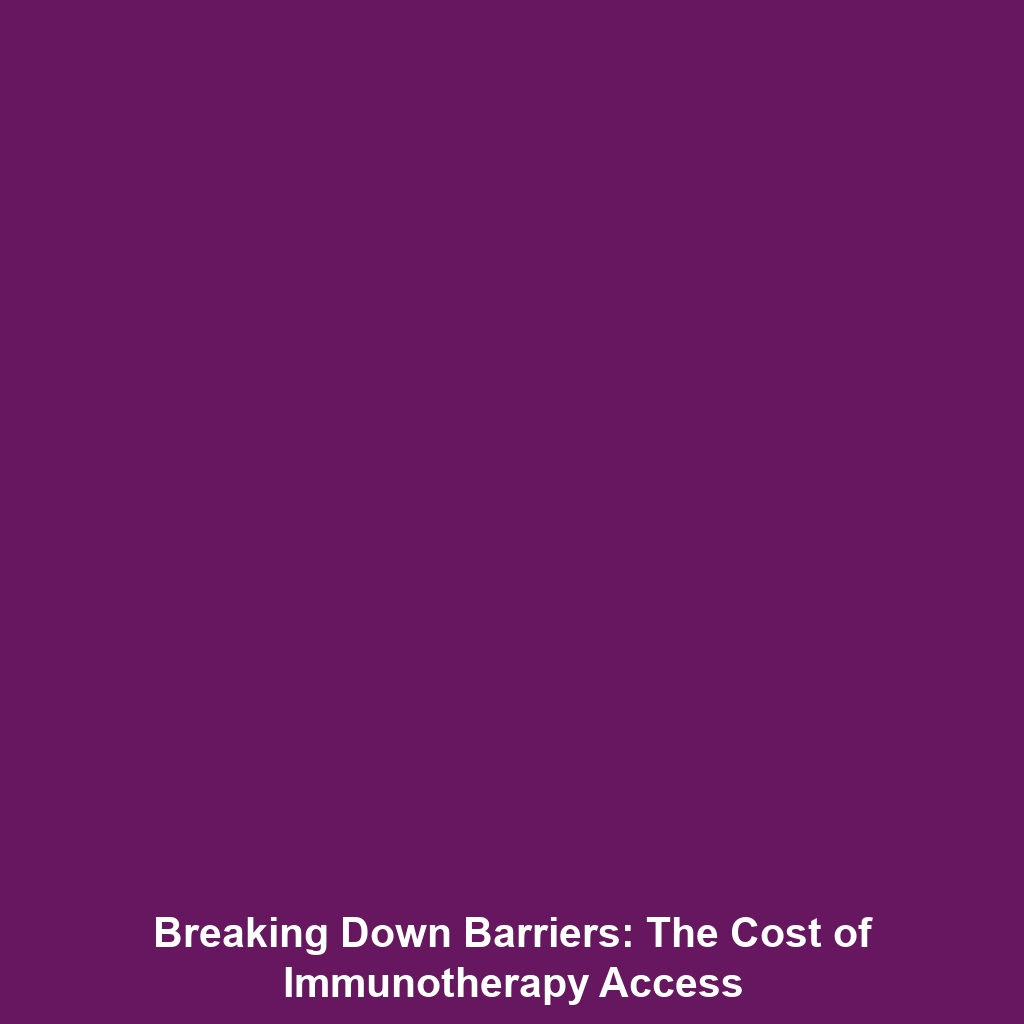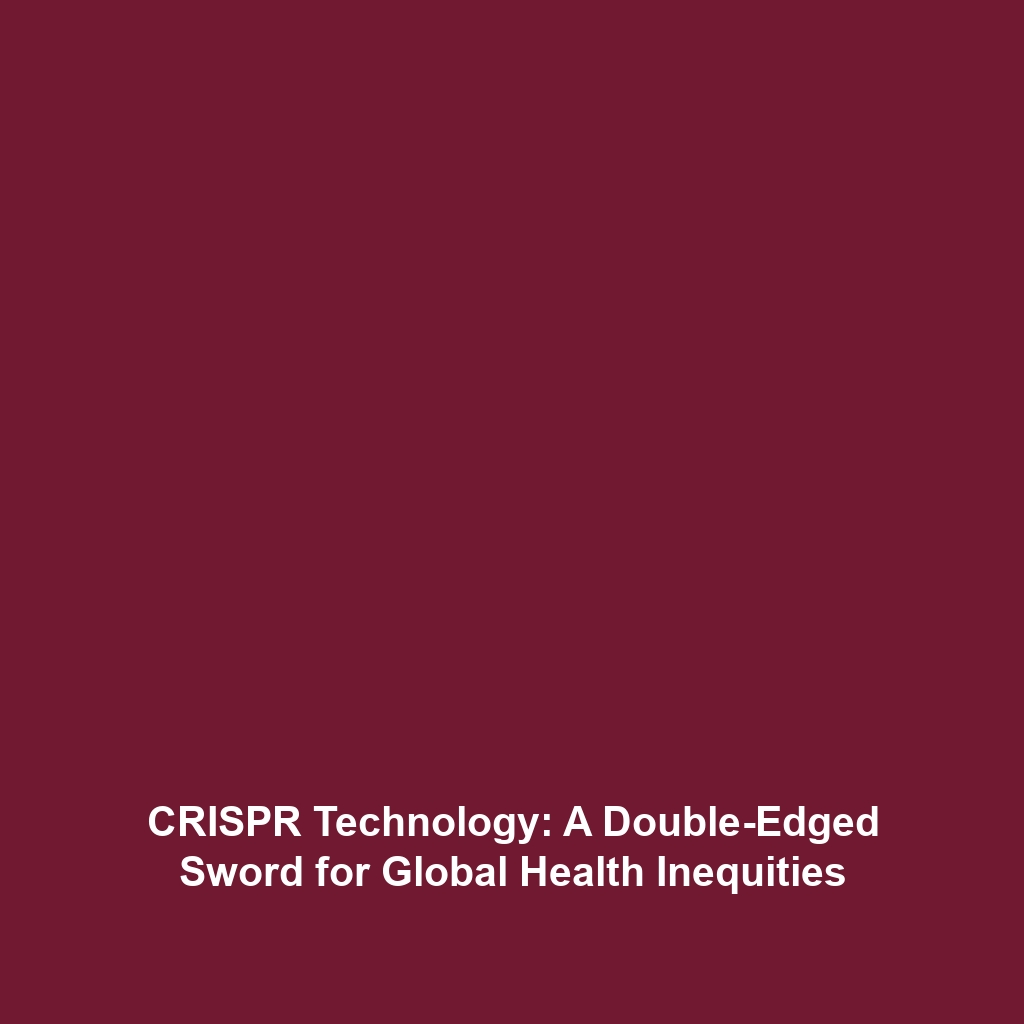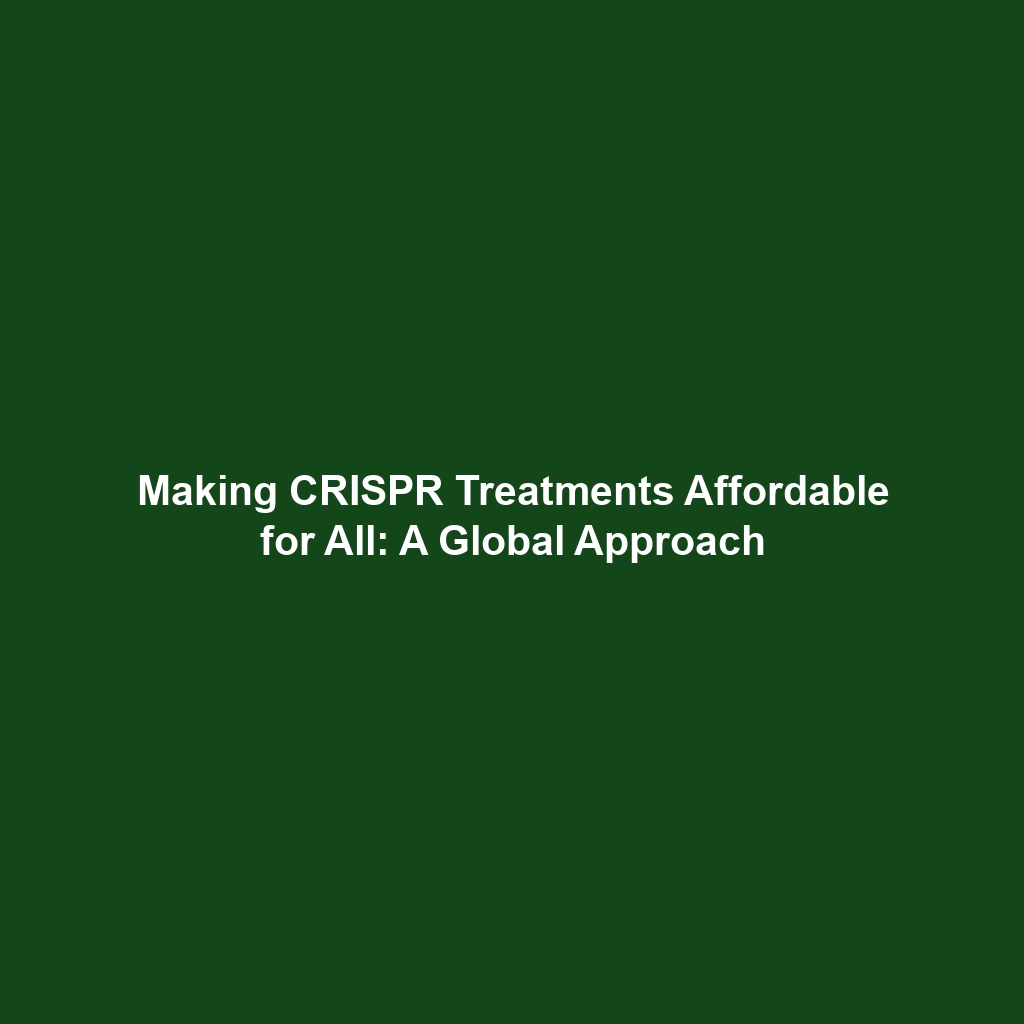Financial and Access Barriers: The High Cost of Immunotherapy and Access to Treatment
Introduction
The emergence of immunotherapy has revolutionized cancer treatment, significantly improving survival rates for various cancer types. Nevertheless, the financial and access barriers associated with these therapies pose a substantial challenge. With the high cost of immunotherapy often leading to limited access for patients, understanding these financial dynamics is crucial within the broader context of Immunotherapy & Cancer. This article delves into the significance of these barriers, their implications for patient care, and the urgent need for solutions that can enhance accessibility.
Key Concepts
Financial and access barriers to immunotherapy primarily encompass:
- Cost of Treatment: Immunotherapy drugs, particularly those that are novel or targeted, can cost upwards of $100,000 per year. This financial burden is often compounded by the need for ongoing treatments.
- Insurance Coverage: Many insurance plans may not fully cover the high costs or may limit access based on specific criteria, making it difficult for patients to obtain necessary treatments.
- Geographic Disparities: Access to immunotherapy treatments can vary significantly depending on geographical location, with residents in rural areas facing greater barriers to receiving care.
Applications and Real-World Uses
Understanding how financial and access barriers manifest in practice is vital for addressing the issues they create. Examples include:
- Patient Advocacy Programs: Many organizations now offer financial assistance and resources to help patients navigate the costs associated with immunotherapy.
- Telehealth Services: With increasing reliance on telehealth, patients can more easily consult with specialists regardless of location, providing some support for those facing geographic barriers.
- Collaborative Research Initiatives: Researchers and pharmaceutical companies are now collaborating with patient advocacy groups to create pricing models that reflect patient needs and socioeconomic status.
Current Challenges
Several challenges hinder the effective study and implementation of financial and access solutions in the realm of immunotherapy:
- Lack of Transparency: Unclear pricing structures from pharmaceutical companies lead to confusion regarding actual costs.
- Payer Resistance: Some insurance companies display reluctance in adopting new immunotherapy treatments, often requiring extensive documentation before approving coverage.
- Socioeconomic Disparities: Patients from low-income backgrounds may experience greater difficulties in accessing treatment, which can exacerbate health disparities.
Future Research and Innovations
Looking forward, innovations and research focused on addressing these barriers are critical for the future of immunotherapy in cancer treatment. Key areas of development include:
- Value-Based Pricing Models: Emerging frameworks aim to align drug prices with the actual value delivered to patients, potentially reducing costs and improving access.
- AI-Driven Cost Assessment Tools: Utilizing artificial intelligence to predict patient costs and insurance coverage can help patients navigate the treatment landscape more effectively.
- Expanded Clinical Trials: Increasing the diversity of patient demographics within clinical trials could inform better pricing and inclusion strategies for various populations.
Conclusion
Financial and access barriers reveal significant challenges in the landscape of Immunotherapy & Cancer, affecting patient care and treatment decisions. As the field continues to evolve, it is imperative to seek solutions that enhance accessibility while maintaining quality standards in cancer treatment. Stakeholders, including healthcare providers, policymakers, and pharmaceutical companies, must collaborate to reduce these barriers and enhance patient outcomes. For further reading, explore our articles on Latest Innovations in Cancer Treatment or Patient Resources for Navigating Cancer Care.


